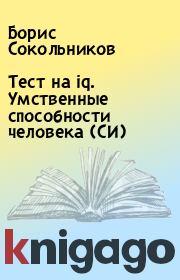Kyle Inan - Evolution of the International Monetary System
 | Название: | Evolution of the International Monetary System |
Автор: | Kyle Inan | |
Жанр: | Юриспруденция, Экономика, Газеты и журналы | |
Изадано в серии: | неизвестно | |
Издательство: | SelfPub | |
Год издания: | 2021 | |
ISBN: | неизвестно | |
Отзывы: | Комментировать | |
Рейтинг: | ||
Поделись книгой с друзьями! Помощь сайту: донат на оплату сервера | ||
Краткое содержание книги "Evolution of the International Monetary System"
This book purports to examine in-depth the historical evolution of the International Monetary System starting with the “Classical Gold Standard System” that was adopted by various governments around the world between the years of 1880-1914. Following the inception of the “Inter-war Period” which took place between 1918-1939, the Classical Gold Standard System was abandoned. It was only after the post-WWII period that this standard was restored only for a short-period of time until the emergence of the “Bretton Woods System” between 1944-1971 which completely replaced the gold standard system with the U.S. dollar.
К этой книге применимы такие ключевые слова (теги) как: Самиздат,финансовый анализ,экономические расчеты,социально-экономическое развитие,конкурентные позиции на внешнем рынке
Читаем онлайн "Evolution of the International Monetary System". [Страница - 2]
- 1
- 2
- 3
- 4
- . . .
- последняя (8) »
A third most striking feature of the Gold Standard System was (iii) the fact that the melting of gold coins was legal. This would assure that the value of gold coins was same for monetary and non-monetary purposes.
At this point, some of us might inquire about the conditions as well as the factors that determine the value of money supply under the Gold Standard. An illustrative graphical example would help us explain the key determinants of the money supply of gold under this system.
![Книгаго, чтение книги «Evolution of the International Monetary System» [Картинка № 1] Книгаго: Evolution of the International Monetary System. Иллюстрация № 1](/icl/i/88/631588/_0.jpg)
Graph 1.1 shows that, the quantity of gold demanded for non-monetary purposes will go down and the quantity supplied of gold is also expected to increase after an increase in the price of gold. Under the Gold Standard System, the government will fix the mint price above the Po level to assure that there is an adequate supply of gold to make coins out of. At a mint price of Pm, the quantity demanded of gold for monetary purposes is the distance between the origin and point Q1, whereas the quantity supplied of gold equals the distance between the origin and point Q2. In this case, the distance between Q1 and Q2 or the range between points E and F will be the gold used in the making of coins. (i.e. excess supply of gold available for gold coins.)
Under the Gold Standard System, the value of money supply can also shrink or expand based on the demand for gold for non-monetary purposes and the supply of gold. Specifically meaning that shifts in demand for gold for non-monetary purposes or the supply of gold curve can create a change in the money supply.
There are three main reasons that would cause a significant shift in the demand curve. These are as follows: (1) if there is an increase in the income of consumers, (2) if there is a change in the expectations of future prices, and if (3) there is a change in the prices of related goods and services. Since an increase in demand for gold for non-monetary purposes can cause the money supply to decline, if the supply of gold increases after a gold rush (i.e. The U.S. California Gold Rush of 1848-1855) then a shift in the supply of gold curve can also be observed.
To summarize, there are primarily three distinct factors that can cause a shift in the supply of gold curve. The three factors are: (a) If there is an increase in the number of producers; for instance, if new gold mines are discovered. (b) If the cost of production changes; for instance, if transportation becomes cheaper. (c) If there is a considerable change in the technology of production; for instance, it might become easier and less costly to extract gold with newly advanced technology.
Furthermore, a most remarkable feature of the gold standard system was its included benefits at the operational level. For instance, the money supply was independent of any government action mainly because the money supply would grow or expand at the same rate (simultaneously) with the gold supply. If there were no new discoveries of gold, then there would not be an expectation for an increase in the money supply.
Since governments had no control over the money supply under the Gold Standard, due to the aforementioned reasons, they would not be able to arbitrarily print more money and cause inflation. Therefore, there was virtually no possibility of inflation under this system. In other words, this system had promised long-term price stability to its owner, which could be described as its most significant benefit.
A second benefit of the Gold Standard was its unparalleled ability to cure its own disease, even in times of inflation. For instance, under inflationary situations, we would normally experience an increase in the price of goods and services and a decrease in gold prices. As a reaction to the change in the price of gold, producers in the economy would switch their resources to the production of goods and services instead of gold and the supply of gold would go down. As less gold is supplied, the prices would go down. Therefore, under the Gold Standard System, there was also a double attack on inflation.
A third most noticeable benefit of the Gold Standard was the “Law of One Price.” This meant that there would be a tendency for all countries under the gold standard to have the same general price levels. As an example, if we were to assume that there were two countries (A & B) with general price levels being PA and PB respectively, and if PA > PB then, under free trade conditions, country A would import goods and services from country B and pay for those imports in terms of gold. In the outcome, for country A, goods and services would arrive and gold would be lost from that country. After a while, PA would start declining. Concurrently, in country B, goods and services would be lost after gold is gained following the transaction. After a while, PB would increase. Eventually, the prices would be equal to each other. (PA = PB)
At this point, we might be inclined to ask ourselves such questions as “What went wrong with the Gold Standard System” or “Why was it dismissed in the first place if it promised such numerous advantageous compared to other international monetary systems?”
In essence, a deeper examination into the intricacies of what is called the “price-specie-flow” mechanism will provide insights into this question and help us clearly understand the actual causes in explaining the deficiencies of the Gold Standard System leading up to its collapse after its abandonment by the United States and Britain in 1931.
Price-Specie-Flow Mechanism under the Gold Standard
During the last half of the nineteenth century, the persistent outflow of capital, along with the simultaneous rise in interest rates around the world has necessitated the establishment of a price-specie-flow mechanism. This system, founded by David Hume, intended to coordinate capital flows and help central banks restore their balance-of-payments equilibrium.
By proposing this mechanism, Hume argued against the idea of having countries strive constantly to maintain a positive balance of trade. The following logic behind this approach was whenever a country had a balance of trade surplus; it would attract a certain quantity of gold in the same amount that the value of exports exceeded the value of imports. Similarly, the opposite of this situation would happen in countries running a trade deficit. This would mean that there would be a gold outflow in the same amount that the value of imports exceeded the value of exports.
In the absence of a monetary authority to regulate the quantity of gold in circulation, the money supply in the country running a positive balance of trade would increase while the money supply would decrease in the country running a trade deficit. Then, based on the principles of quantity theory of money, the country with the money surplus would experience inflation as well as a simultaneous increase in the prices of goods and services, whereas the country with the money shortage would go through a period of deflation after --">- 1
- 2
- 3
- 4
- . . .
- последняя (8) »
Книги схожие с «Evolution of the International Monetary System» по жанру, серии, автору или названию:
 |
| Камир Ибрагимович Батыр, Игорь Андреевич Исаев - История государства и права зарубежных стран Жанр: История: прочее Год издания: 2007 |
 |
| Олег Анатольевич Омельченко - Всеобщая история государства и права. Том 1 Жанр: История: прочее Год издания: 2000 |
 |
| Олег Анатольевич Омельченко - Всеобщая история государства и права. Том 2 Жанр: История: прочее Год издания: 2000 |



